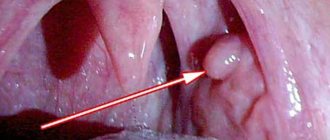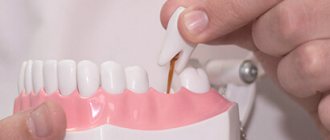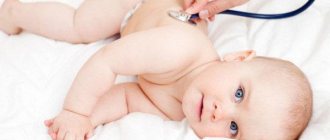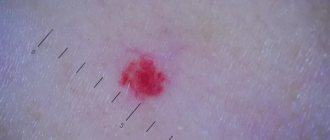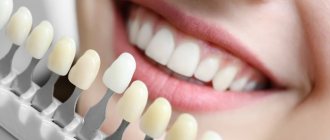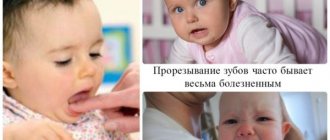Classification of the disease
There are four main types of miliaria, which differ in the nature of the rash, the duration of development and the severity of symptoms:
- Crystalline. It is accompanied by the development of a blistering rash, which most often appears on the head, behind the ears, and on the neck. Other localization of rashes is also possible. 2-3 days after the appearance, the blisters dry out and begin to peel off. Since irritation is not accompanied by inflammation or infection, the crystalline form is the simplest and most harmless.
- Red. A more complex type, in which sweat acts on the skin for a longer time and, accordingly, causes more severe irritation. A rash in the form of small inflamed tubercles provokes slight swelling and is accompanied by itching, burning, and discomfort. Lasts about two weeks.
- Miliaria alba, or vesiculopustulosis. With this type, blisters with a whitish or yellowish filling appear on the skin. When the bubble bursts, it leaves behind a light coating. The presence of color in the bubbly fluid indicates that the rash is accompanied by an infection, often staphylococcal.
- Deep. In most cases, prickly heat causes only superficial damage to the skin. With a deep form of pathology, the deep layers of the skin are affected. The disease is accompanied by blisters filled with light contents, which resolve or burst spontaneously.
Neurofibromatosis in children
To confirm the diagnosis of neurofibromatosis, the child must have at least 2 of the following signs:
- dark spots
- leiomyomas of the iris
- 2 or more neurofibromas in the form of subcutaneous peas
- heredity
- pathologies in the bones
- freckles under the arms and groin
- optical glioma
To detect tumors and diagnose problems with skeletal bones, two methods are used: MRI and radiography. Children with neurofibromatosis have a larger head circumference than children of the same age without this diagnosis. To diagnose NF2 in children, hearing must be tested. To do this, audiometry is used to check the brain, ear nerves and spinal cord to detect possible tumors.
Studying the child's family history can provide important information. If there is neurofibromatosis of the first or second type, a genetic examination can be performed. But we cannot say that its results are 100% accurate. In some cases, abnormalities can be detected in a newborn baby using chorionic villus sampling or amniocentesis.
To make a diagnosis of neurofibromatosis type 1, consultations with the following specialists are needed:
- ophthalmologist
- neurologist
- surgeon
- dermatologist
- oncologist
- geneticist
- neurosurgeon
The doctor may need to see more relatives if there is at least one member of the family with café-au-lait spots, or if there is a family history that indicates that member of the family.
Differential diagnosis
Cafe-au-lait spots are found not only in the disease in question, but in more than a hundred hereditary diseases and syndromes. It is also necessary to distinguish between neurofibromatosis types I and II. In the second type, the tumors are benign, but more aggressive than in the first type.
The absolute diagnostic criterion for NF1 is the presence of bilateral neuromas of the VIII pair of cranial nerves in the patient. In the second type, gliomas, meningiomas, and schwannomas can be detected.
It is necessary to differentiate neurofibromatosis I from Klippel-Trenaunau-Weber syndrome, Proteus syndrome, disseminated lipomatosis, etc.
Differential diagnosis of NF2 in children is carried out with the following diseases:
- schwannomatosis
- nonpolyposis colon cancer
- McCune-Albright syndrome
- LEOPARD syndrome
- Bannayan-Riley-Ruvalcaba syndrome
- Noonan syndrome
- "piebald trait"
- Proteus syndrome, etc.
Neurofibromatosis has common features with a disease such as spotted nevus , which is a manifestation of genetic mosaicism. Some researchers consider macular nevus as segmental neurofibromatosis. Children with macular nevus may develop NF1. Nevus occurs in a child from birth or is found in a child until he is 3 years old. With a spotted nevus, the child has light brown spots, against their background there are dark-colored inclusions of small sizes.
Nevus in children is large, but can be small. There are cases of 2-sided lesions. Spotted nevi do not leave the child’s body throughout his life. There is a very small risk of malignant degeneration of the disease. When diagnosing, it is very important to distinguish between macular nevus and neurofibromatosis.
Symptoms
The main and most obvious symptom of the pathology is a rash. Most often, rashes appear on the head, chest, back, groin, armpits, and buttocks. The rash appears as scattered blisters with clear, white or yellow contents, or as small grains with an inflammatory outline.
During the day, the rash may intensify or decrease, and the severity of its manifestation depends on changes in temperature and care for the baby’s skin. In some cases, the child does not show concern, but sometimes may experience itching, pain and demonstrate discomfort with whims, unstable sleep, and lack of appetite.
In mild forms of the disease, other symptoms may not occur. But in more advanced cases, which are accompanied by complications and infection, clinical manifestations may be supplemented by:
- elevated temperature up to 38 degrees;
- the appearance of light plaque, ulcers, ulcers;
- the formation of weeping cracks with an unpleasant odor;
- general deterioration of condition.
When assessing symptoms, it is important to prevent the development of advanced forms of prickly heat and consult a doctor promptly, without waiting for complications to develop. Source: Skin care for a newborn. Solntseva O.A. Medical Council, 2014. p. 35-39.
Causes
Most often, parents who do not adhere to the basic rules of caring for the child turn to doctors with complaints about heat rash in their baby: they bathe him with soap every day, wrap him up excessively without taking into account the real ambient temperature. Children with skin allergies, diabetes mellitus, rickets, seborrheic dermatitis or frequent diarrhea are also at risk. Chubby, overweight and bottle-fed babies are especially at risk of developing rashes.
Among other reasons for the development of prickly heat in children are:
- non-compliance with normal temperature conditions;
- too hot, tight clothes or shoes that do not allow air to pass through and do not create natural ventilation;
- excessive use of skin cosmetics that disrupt the acid balance and cause increased sensitivity (soaps, baby creams, oils, etc.);
- rare change of diapers or their poor quality, lack of care;
- viral diseases that are accompanied by fever.
Skin rashes on babies: causes, treatment and prevention
In the first months of life, babies are prone to various types of irritation and rashes on parts of their body. This phenomenon is quite normal and in most cases is considered normal. This is due to the fact that the baby’s body is still very vulnerable, and it is just beginning to adapt to external and internal factors that can negatively affect the child’s condition. In addition, up to two or three months the baby is faced with hormonal changes, which often causes similar reactions. Consequently, a rash is not always a cause for concern and panic, but a specialist can best determine the nature of its occurrence and methods of treatment. There are a number of reasons that provoke the appearance of pimples, spots or redness on the skin of a newborn:
- hormonal rash;
- prickly heat;
- dermatitis;
- hives;
- food allergies;
- infections and viruses.
In 70% of cases, the rash occurs precisely on a hormonal background, which is completely normal and does not require treatment, especially medication. This is due to the receipt of maternal hormones while still in the womb, and subsequent adaptation to new conditions. Distributes on the forehead, temples, and on the back of the head under the hair. It goes away on its own, usually within a few days. In this case, the mother is recommended to simply bathe the baby daily in boiled water with the addition of a herbal solution (series). During the hot season, the baby’s delicate skin is doubly prone to various manifestations due to drying out in the sun. All areas exposed to sweat also become vulnerable. Miliaria is not life-threatening for the baby, but it can cause discomfort in the places where it is localized. You should bathe your child more often, ventilate the room, and, if possible, maintain optimal humidity where the baby spends most of his time. Of course, you should not dress your child in clothes that will make him hot and uncomfortable. It is useful to give the baby time to be without clothes and diapers so that the skin has the opportunity to breathe. In addition, it is recommended to always wash small items only using a special children's powder, and then iron them on both sides.
How to distinguish heat rash in a child from allergies and other diseases
When a rash appears on the skin, the most difficult thing for parents is to distinguish prickly heat from other diseases: allergies, chicken pox, measles, etc.
First, you should examine the location of the rash. In the first case, the rashes are located in hard-to-reach places: in the area under the diaper, in the folds of the skin, in the hairline. In this case, the rash almost never appears on open areas of the skin that are well ventilated. But if the rash appears on the face, open parts of the arms and legs, most likely it is an allergy.
A simple home test will also help make a differential diagnosis. You just need to undress the baby and leave him without clothes or a diaper for several hours. If the rash appears as a result of prickly heat, during this time it will decrease and become paler. If it is an allergy, no changes will occur to it.
Additional symptoms will help distinguish the disease from measles, chickenpox and other viral pathologies. With infectious diseases, the temperature always rises, intoxication appears, and the rash quickly spreads throughout the body. In turn, the main symptom of prickly heat is just a rash.
Types of urticaria
There are two forms of the disease: acute and chronic. Acute urticaria is often caused by food allergies, insect bites, medications, or exposure to an allergen. It lasts, as a rule, up to 1.5 months.
Chronic urticaria lasts more than 6 weeks. It can begin when the immune system attacks the body's tissues, thereby causing an autoimmune reaction. Antibodies (proteins that normally fight bacteria and viruses) cause the release of histamine, which leads to lesions on the skin.
The rash can be localized or appear anywhere on the body, from the neck to the knees. Rarely does the allergy affect the arms, legs and face, unlike angioedema. Characterized by the appearance of rashes and spots on the skin. There is also swelling in the eyelids, lips and larynx.
Angioedema urticaria is a medical emergency because it can cause breathing problems and suffocation.
It is believed that 30 to 50% of cases with chronic urticaria have an autoimmune cause. The reason why autoimmune urticaria develops is unknown, even though it often occurs along with other autoimmune diseases such as:
- rheumatoid arthritis – the immune system attacks the joints;
- lupus – the immune system attacks the joints and skin.
In rare cases, chronic hives can also be caused by other infections (eg Helicobacter), hyperthyroidism (overactive thyroid), hepatitis B or C (liver infections), intestinal parasites.
Table - Types of urticaria in children
| Name | Peculiarities |
| Immune (IgE-dependent - food, drug, helminth; complement components - anaphylotoxins C3a and C5a; complement-induced - hereditary or acquired deficiency of the C-1q inactivator) | Characterized by skin damage and itching. Quincke's edema, urticarial type of vasculitis and anaphylactoid urticarial reaction are possible. |
| Non-immune (based on a pseudo-allergic reaction) | There is no true reaction of interaction between antibody and antigen with the formation of an immune complex. Ig-E does not increase. Occurs due to consumption of foods that contain vasoactive amines. |
| Pigmented | Accompanied by an increase in the number of mast cells. Often found on the upper and lower extremities or trunk. May damage internal organs and be accompanied by systemic mastocytosis. |
| Vascular urticaria or vasculitis | It is characterized by several lesions that have an unusual shape and disappear after a few days. Other symptoms of urticaria vasculitis include fever, joint and muscle discomfort, abdominal pain and headache. |
Diagnostics
You should not self-medicate or try to diagnose your child yourself. Before you begin to treat prickly heat in a child, when the first rash appears, you should contact a pediatric dermatologist or pediatrician. The specialist will conduct an examination and distinguish the pathology from other diseases that are accompanied by a skin rash. For an experienced pediatric specialist, this is not difficult even with an initial visual examination.
In some cases, additional examination is necessary for a comprehensive diagnosis. The doctor may prescribe scraping for pathogenic fungal infections, as well as bacterial culture for microflora.
Treatment
The main method that allows you to remove rashes and cure skin pathologies is hygienic care. It is important to change the diaper immediately after a bowel movement and every three hours, washing the baby with running water. Between shifts you need to give air baths and leave the baby without clothes for a few minutes. At the same time, it is necessary to abandon synthetic clothing and low-quality children's cosmetics.
Bathing is carried out in water with a decoction of medicinal herbs. You can add chamomile, yarrow, and string. After bathing the child, dry thoroughly and powder the skin with powder.
In some cases, the doctor also prescribes treatment of rashes with drying antiseptics (“Furacilin”, “Chlorphilipt”), and creams containing panthenol (“Bepanten”, “Dexpanthenol”). White, red and deep miliaria are treated with antifungal and antibacterial ointments. However, it is not recommended to use any medications without prior consultation with a doctor. Source: Modern dermatological and cosmetic products for caring for the skin of children. Kotlukov V.K., Kuzmenko L.G., Antipova N.V. Medical Council, 2013. p. 8-12.
Doctors recommend setting the air temperature in the nursery at 20-22 degrees and monitoring the humidity, which should not exceed 50-70%. A good solution would be to purchase an air humidifier that will help create the right microclimate. These simple steps can help you get rid of the conditions that increase your risk of developing heat rash.
Prevention
Effective prevention consists of proper and thorough hygienic care of the child: regular bathing, frequent changing of diapers or diapers. During the hot season, you can bathe your baby up to 2-4 times a day, but it is important not to use soap, oils, lotions and other products with each water procedure that can disrupt the acid balance and clog the glands.
It is also important to select clothes from natural, breathable fabrics and avoid synthetic and semi-synthetic fabrics that do not ensure normal evaporation of sweat. You need to dress your baby appropriately for the weather and not wrap him up in a warm blanket on a summer night. Source: Skin care for infants. Prevention of diaper dermatitis. Starostina L.S. Medical Council, 2022. p. 41-49.
Sources:
- Skin care for infants. Prevention of diaper dermatitis. Starostina L.S. Medical Council, 2022. p. 41-49
- Newborn skin care. Solntseva O.A. Medical Council, 2014. p. 35-39
- Modern dermatological and cosmetic products for the care of children's skin. Kotlukov V.K., Kuzmenko L.G., Antipova N.V. Medical Council, 2013. p. 8-12
Date of publication: 10/20/2017
The information in this article is provided for reference purposes and does not replace advice from a qualified professional. Don't self-medicate! At the first signs of illness, you should consult a doctor.
Skin rashes on babies: causes, treatment and prevention
In the first months of life, babies are prone to various types of irritation and rashes on parts of their body. This phenomenon is quite normal and in most cases is considered normal. This is due to the fact that the baby’s body is still very vulnerable, and it is just beginning to adapt to external and internal factors that can negatively affect the child’s condition. In addition, up to two or three months the baby is faced with hormonal changes, which often causes similar reactions. Consequently, a rash is not always a cause for concern and panic, but a specialist can best determine the nature of its occurrence and methods of treatment. There are a number of reasons that provoke the appearance of pimples, spots or redness on the skin of a newborn:
- hormonal rash;
- prickly heat;
- dermatitis;
- hives;
- food allergies;
- infections and viruses.
In 70% of cases, the rash occurs precisely on a hormonal background, which is completely normal and does not require treatment, especially medication. This is due to the receipt of maternal hormones while still in the womb, and subsequent adaptation to new conditions. Distributes on the forehead, temples, and on the back of the head under the hair. It goes away on its own, usually within a few days. In this case, the mother is recommended to simply bathe the baby daily in boiled water with the addition of a herbal solution (series). During the hot season, the baby’s delicate skin is doubly prone to various manifestations due to drying out in the sun. All areas exposed to sweat also become vulnerable. Miliaria is not life-threatening for the baby, but it can cause discomfort in the places where it is localized. You should bathe your child more often, ventilate the room, and, if possible, maintain optimal humidity where the baby spends most of his time. Of course, you should not dress your child in clothes that will make him hot and uncomfortable. It is useful to give the baby time to be without clothes and diapers so that the skin has the opportunity to breathe. In addition, it is recommended to always wash small items only using a special children's powder, and then iron them on both sides.

